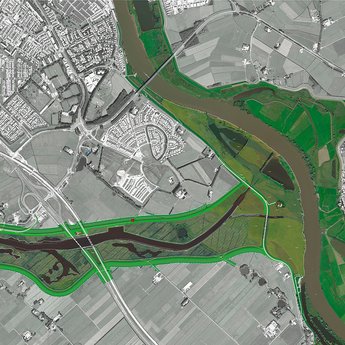Prevention first
In this perspective, flood prevention is the primary focus (layer 1). Robust dike rings are created and the IJssel and Vecht system are separated by a flood lock and pump. Consequently, the water level in the Zwarte Meer river and the Vecht river will be regulated more, creating new opportunities for nature and recreation. In the IJssel River, there is a focus on natural dynamics. The Kamper islands will be situated within the primary flood defence.
Tailored mix
In this perspective, the most favourable balance between the measures in the three layer multi-layer safety model are explored per area. A differentiation is made between urban and rural areas. In this way, urban islands with a greater flood protection level are created in a more dynamic delta. The IJssel and Vecht system remain connected via open links. Extra water storage capacities are created for high water levels in the Vecht.

















